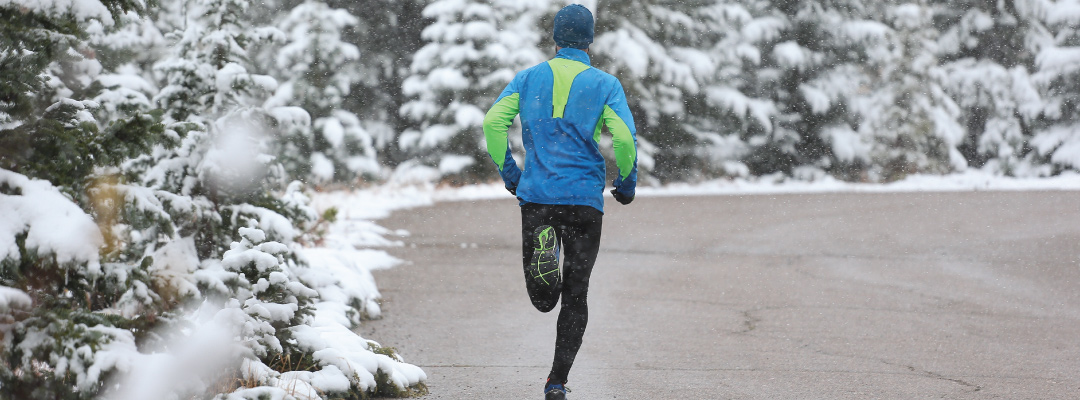
Author: The Mizuno Shoe Guy
Published on: October 28, 2016
It might come as a surprise to newbies, but, in most parts of the country, it’s actually easier to run in the colder months than in the hot, humid days of summer. That is, if you dress properly for winter conditions.
Certainly, winter means different things to different parts of the country but you can run comfortably and safely through the worst conditions with the right running clothes. Failing at that, a long winter run can be downright miserable—and potentially dangerous.
Without question, the single greatest mistake winter runners make is wearing too much. The body generates so much body heat while running—more than eight times as much as the body at rest—that the key to winter running is getting rid of the heat and staying cool enough.
Here’s what you need to know for dressing for winter running conditions:
- Don’t overdress. Wearing too much clothing during winter is just as bad as wearing too little. Overdressed means overheating.
- Check conditions before leaving the house. Note the temperature, strength of the wind (and its direction) and whether there’s any chance of precipitation. You need to dress according to changing conditions—especially on long runs.
- Your first layer should be a top made of technical fabrics such as Mizuno’s Breath Thermo (the warmest) or DryLite which will keep you warm and dry. Depending on the conditions, you can then layer outer wear, such as a jacket or lightweight shell and light tights.
- Wear running clothes with wicking fabrics. Lightweight, modern running clothes wick away moisture from your skin to the surrounding air. The very best running clothes, using technical fabrics, will keep you dry by venting the moisture and body heat away from the skin. Never wear a heavy cotton sweatshirt.
- Use reflective outwear. Since running in the dark is a greater issue in the winter, choose running jackets, shirts and tights with reflective panels so you are more visible to traffic.
- You should be a little chilled when you start a cold-weather run. Your body heats up so quickly that if you’re perfectly comfortable at the start of a winter run, you’re probably overdressed.
- No sweat. You don’t want to wear so much that you sweat. Being cold isn’t the problem; the water (or sweat) is. The worst is wet cotton shirts or shorts. You will get extremely cold, lose body heat and put yourself in a dangerous situation.
- Long sleeves are a must. Assuming it’s cold (say below 45 degrees), a long sleeve shirt made of a technical, wicking fabric is a must. Many long sleeves come with thumb holes for additional hand warmth.
- If it’s windy, start your run into the wind. The first few miles will be chilly, but you’ll warm up quickly. The payoff is on the back end of your run when it’s much easier and warmer to finish up with the wind at your back.
- Always wear a hat or hood. You lose 40 percent of your body heat through the neck and head. You must conserve this heat or you’ll quickly become cold and miserable. A baseball hat is usually fine, but on some winter mornings a wool cap that you can pull over your ears is essential.
- Use a lightweight, vented running jacket (or vest) with plenty of pockets and removable sleeves. A good running jacket is easy to vent (when you warm up) and some have sleeves that can be unzipped and placed in a pocket. Unless it’s very cold, don’t wear a heavy jacket as it will be too warm. Running vests and lightweight shells also work well.
- Wear light running tights. Never wear sweatpants. Tights are light, easy to run in and extremely comfortable. Tights are fine in temperatures when it gets below 40 degrees. Mizuno’s Breath Thermo tights use a patented fabric that actually generates heat to keep you warm on the coldest days.
- If it’s below freezing, wear mittens. Gloves simply aren’t warm enough. Mittens are warmer because they trap the hand’s warmth better than gloves. In extremely cold weather, you’ll need to wear a shell over the mittens and/or gloves as a liner.
- Apply a layer of Vaseline or lip gloss. Your lips will get chapped and cracked in the cold, dry weather without some protection.
- Don’t forget sunglasses. If it’s a bright day and there’s snow on the ground, sunglasses are imperative.
